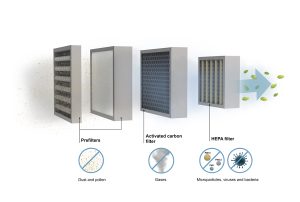The prevalence of harmful bacteria and germs inside the classroom is a constant challenge for educators who want to create an environment that is safe, healthy, and conducive to learning. However, with a little planning, protection against these microorganisms can be easily optimized to serve the needs of students while also protecting the health of all classroom occupants. Here are some helpful insights into how you can protect your students and keep your classroom conditions clean at the same time.
Plan for the inevitability of bacteria
As teachers, you may be surprised to find out how many dangerous bacteria and germs are lurking within the air inside the classroom. Yes, this is the reality of all indoor environments and especially those who are being used for educational purposes. Although it may be possible to create a completely sterile environment, this is very difficult to accomplish in an all-encompassing manner. What you can do, however, is plan for this inevitability. First, you need to take a look at your classroom’s air quality. Is your classroom air clean? How is the air in your classroom relative to the air outside? Are there any high levels of dust, pollen, or other particles that may be causing issues? Next, you need to understand how bacteria and other microorganisms are present in your classroom. No matter how clean an environment might be, bacteria will always exist inside a building. These bacteria are most commonly found in low concentrations and do not pose a significant health risk to you or your students. What is dangerous, however, are harmful bacteria that are present in large quantities and may cause serious health issues, such as food poisoning and other infectious diseases.
Teach and practice proper hygiene
In addition to implementing strategies that make the air in the classroom safe for your students, you can also help them to learn how to protect themselves against harmful microorganisms. First, talk about the importance of proper hygiene. After all, if your students don’t understand why it is important to wash their hands before eating or after using the bathroom, they will not be able to protect themselves. Next, create a daily hygiene routine that your students can follow. Make it a habit so that it becomes second nature and so that they don’t forget.
Utilize an air purifier’s built-in protection in every room
When it comes to air purifiers, you have many options to choose from. However, one thing that you need to remember is that these products should be used in conjunction with regular maintenance. Simply put, air purifiers will only be as effective as the air inside your room. Thus, if your classroom is not keeping up with the bacteria, dust, and other harmful particles, then the air purifier will be having a difficult time. Every room in your classroom should have an air purifier installed. This will help to keep harmful bacteria at bay and will also protect your students by lowering the amount of harmful indoor pollution that is present in the air.
In conclusion, when it comes to creating an environment that is both safe and conducive to learning, it is important to remember that bacteria will always be part of the equation. Fortunately, there are many ways that you can manage this risk and protect your students. First, plan for the inevitability of bacteria inside the classroom. Next, teach and practice proper hygiene. Also, install an air purifier in every room and stay on top of maintenance. Doing so will ensure that harmful bacteria are kept at bay while also protecting your students against harmful indoor pollutants.






No comment yet, add your voice below!